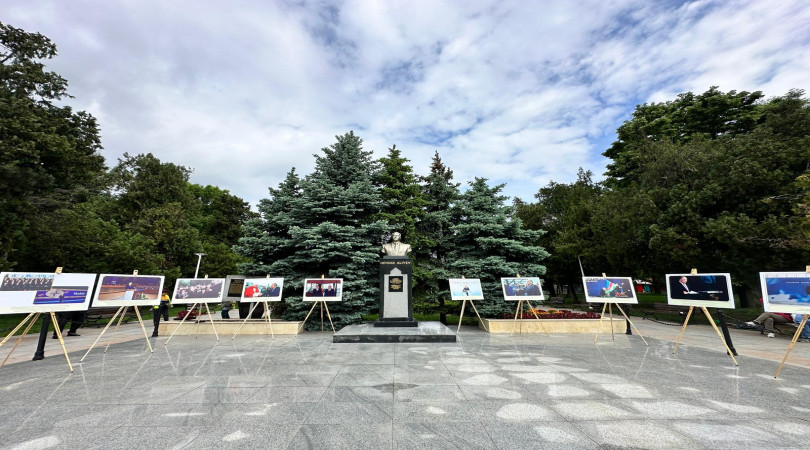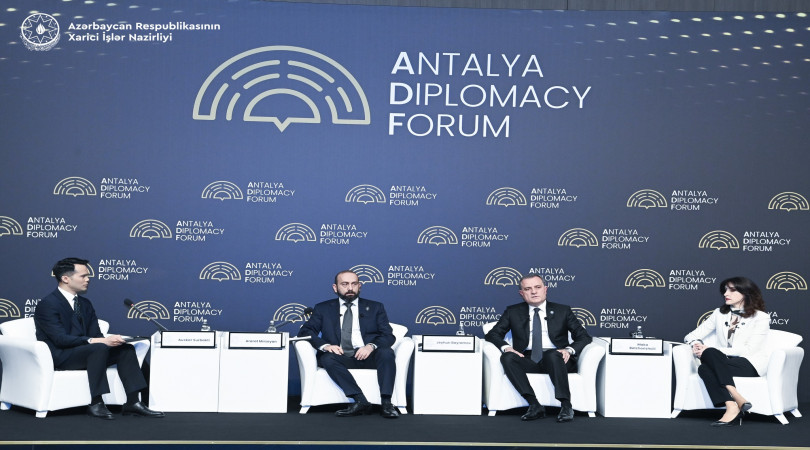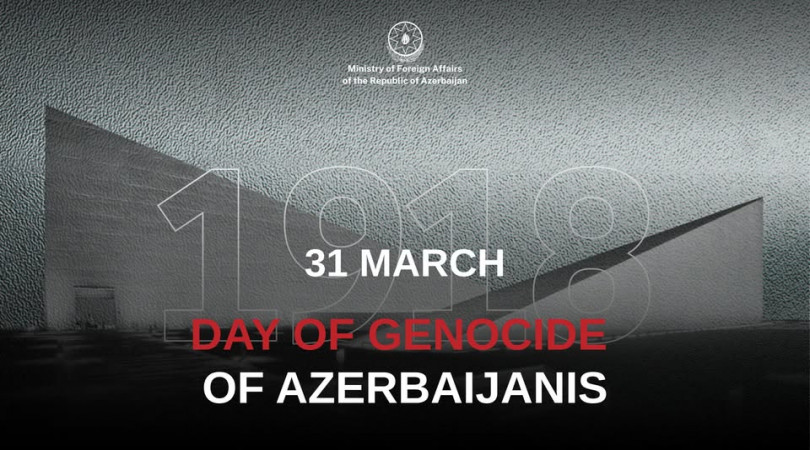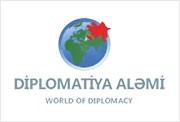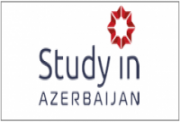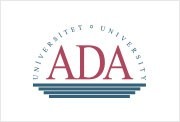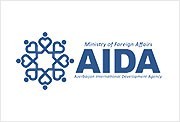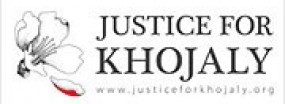İnformation about Khojaly Genocide
Over the night from February 25 to 26, 1992 Armenian armed forces implemented the capture of the Khojaly city with support of hard equipment and the personnel of the infantry guards regiment #366 of former Soviet Union.
The massed firing with using artillery weapon, hard military equipment, which was began in the evening of February 25, preceded assault of the city.
As a result of this the fire began in the city and by five o'clock in the morning the whole city was in fire. The population (about 2500 people) remained in the city were forced to leave their houses in the hope to find the way to Aghdam - the district center and the nearest place mainly populated by Azerbaijanis.
But these plans have failed. Armenian armed forces with the military support of the infantry guards regiment destroyed Khojaly city and with particular brutality implemented carnage over the peaceful population.
As a result:
613 people were killed, among them;
63 children,
106 women,
70 the elderly.
8 families were killed completely.
25 children lost both parents.
130 children lost one of the parents.
487 people were wounded, including;
76 children
1275 people were hostages
150 people were missing
The damage done to both state and private property estimated 5 billion rubles (according to the prices for 01.04.92)
These figures show the results of the most bloody tragedy of Nagorno-Karabakh conflict, which began on February, 1988 with illegal demands of ethnic Armenians of Nagorno-Karabakh Autonomous Oblast of Azerbaijan SSR to join Armenia SSR that was provoked with direct support of ruling circles of the Armenian SSR, consent and inactivity of central authorities of Soviet Union.
Khojaly - the main target
Khojaly assault by Armenian armed forces was predetermined by strategic location of the city. The city with population of 7000 people is situated 10 kilometers to South-East from Khankendi. Khojaly is situated on the way Aghdam-Shusha, Askeran-Khankendi and has an airport, the only in Nagorno-Karabakh.
Khojaly is the historical place and memorials of ancient history have still remained here. The memorials of Khojaly -Kedabek culture of XIV-VII centuries B.C. are near Khojaly village. The funeral memorials - the stone boxes, barrows and necropolis of the late Bronze Age and early Iron Age, as well as architectural memorials - round crypt (1356-1357) and mausoleum (XIV century) were found here. The various stone, bronze, bone adornment, the ceramics household goods were found during the archeological excavations. The name of the Assyrian king Adadnerari (807-788 cc. B.C.) was written on one of the beads found in Khojaly.
The population ranched and done with the wine-growing, beekeeping and grain farming. There were the textile factories, 2 secondary schools and 2 partial secondary schools in the city.
In connection with the events of last years 54 Turks-Meskhets families - refugees from Fergana (Uzbekistan), as well as Azerbaijanis expatriated from Armenia have taken refuge in this city. Because of that the construction of branches of big industrial enterprises of Azerbaijan, residential buildings and other sites were developed.
Later the Armenian side admitted that one of the first goals of Armenian armed forces was the liquidation of Khojaly base to open the corridor connected Askeran village and Stepanakert across the city and unblocking of the only airport, which was under control of the Azerbaijanis.
Pay attention to the phrase "the liquidation of Khojaly base". These words, which are also heard today, disclose motives of mass extirpation of children and women, motives of bloody massacre implemented by Armenians.
Chronicle of tragedy
Khojaly was under blockade since October, 1991. On October, 30 the ground traffic was cut off and helicopter was the only way of transportation. The last civilian helicopter arrived in Khojaly on January, 28 and after civilian helicopter was brought down over Shusha city, as a result of which 40 people died, the helicopter traffic also stopped its functioning. Beginning from January 2 there was no electricity in the city. The city lived due to the courage of population and heroism of his defenders. Defense of the city was organized by local guard forces, militia and fighters of National Army armed mainly by submachine guns.
From the second part of February Khojaly was encircled by Armenian armed forces and subjected to daily artillery and hard military equipment firing, attack attempts of the Armenian side.
Preparation for Khojaly attack began in the evening of February, 25 when the military equipment of regiment No 366 began to take positions around the city. The assault of the city began with the 2 hours firing by tanks, armored cars and guns with the missile "Alazan". Khojaly was blocked from three sides and the people tried to escape in Askeran direction. But very soon they understood that it was the ominous trap. Near Nakhchivanik village the Armenian armed forces opened the fire on the unarmed people. Just here, in Askeran-Nakhchivanik shallow gully many of the children and women, the elderly, frostbitten and weaken in the snow of forests and mountain passes became the victims of the brutality of Armenian armed forces.
These events took place when Foreign Minister of Islamic Republic of Iran Ali Akbar Vilayati visited the region with mediatory mission. On February, 25 he met with leadership of Azerbaijan in Baku and on February, 27 he planned to go to the Karabakh, and then to Armenia. In connection with that according to agreement of both parts three days cease fire was declared from February, 27 till March, 1, but it was also ignored by the Armenian side. It was also happened on February, 12 when the mission of Council of Security and Cooperation in Europe arrived in Karabakh with the aim to acquaint and analyse the situation in the conflict zone and possibilities of its settlement, and then it planned to go to Yerevan and Baku. Exactly on February, 12 Armenian extremists carried out capture of Malibeyli and Gushchular villages of Shusha district, as a result of which the villages were completely destroyed and burnt. Only in Malibeyli about 50 people were killed, wounded and taken as hostages.
Those days Azerbaijani forces couldn't burst through to help the population of Khojaly, and there was also no ability to take away the dead bodies. At the same time special groups of Armenians in white camouflage cloaks using helicopters searched the people in the forests, groups of people who came out the forest were shot or taken as hostages and subjected to tortures.
On February 28 the group of local journalists could reach the place of massacre of Azerbaijanis by two helicopters. Awful sight shocked all - the field was covered by dead bodies. Despite the convoy of the second helicopter they could take only 4 dead bodies because of firing of the helicopters by Armenian militants. On March, 1 when the group of the foreign and local journalists could come to this place, the sight that they saw was more terrible. The dead bodies were mutilated. Many of them had the bullet wounds to head and this showed that the wounded people were finished. After medical checkup of dead bodies it was determined that they were scalped, their ears and other organs were cut off, the eyes were put out, their extremities were chopped off, they have numerous of gun wounds, many of them pressed by hard equipment.
Those days foreign newspapers wrote:
"Crual L'Eveneman" magazine (Paris), March 25, 1992: "The Armenians attacked Khojaly district. The whole world became the witness of the disfigured dead bodies. Azeris speak about thousand killed people".
"Sunday Times" newspaper (London), March 1, 1992: "Armenian soldiers annihilated the hundred families".
"Financial Times" newspaper (London), March 9, 1992: "…Armenains shot down the column of refugees, fled to Aghdam. The Azerbaijani side counted up about 1200 dead bodies…
… The cameraman from Lebanon confirmed that the rich dashnak community of his country send the weapon and people to Karabakh".
"Times" newspaper (London), March 4, 1992: … "Many people were mutilated, and it was remained only the head of one little girl"
"Izvestiya" newspaper (Moscow), March 4, 1992: "…Camcoder showed the kids with the cut off ears. One old woman was cut off the half of her face. The men were scalped…"
"Financial Times", March 14, 1992: "General Polyakov said 103 Armenian servicemen from regiment No 366 stayed in Nagorno-Karabakh".
"Le Monde" newspaper (Paris), March 14, 1992: "… The foreign journalists in Aghdam saw the women and three scalped children with the pulled off nails among the killed people. This is not "Azerbaijani propaganda", but reality"
"Izvestiya" newspaper, March 13, 1992:
"Major Leonid Kravets: "I saw about hundred dead bodies on the hill. One little boy was without a head. Everywhere were the dead bodies of women, children, elders killed with the particular brutality".
"Valer actuel" magazine (Paris), March 14, 1992: "…On this "autonomous region" Armenian armed forces together with the people who are natives of Near East have the most modern military equipment, including the helicopters. ASALA has military bases and ammunition depots in Syria and Lebanon. Armenians annihilated Azerbaijanis of Karabakh, implemented bloody massacre in more than 100 Moslem villages".
Journalist of British TV company "Funt man news" R. Patrick who visited the place of tragedy: "Crime in Khojaly can not be justified in public opinion".
From the report of "Memorial" Human Rights Watch Center
"Khojaly
…Since autumn of 1991 Khojaly has been practically blocked by Armenian armed formations and after the withdrawal of internal troops from Nagorno-Karabakh, full blockade of Khojaly was imposed. Beginning from January 1992 electrical energy transfer to Khojaly was stopped. Part of inhabitants left blocked city, however, despite insistent requests of head of executive power of Khojaly city Elman Mammadov, total evacuation of peaceful population was not organized.
On February, 25 Armenian armed formations began assault of Khojaly.

